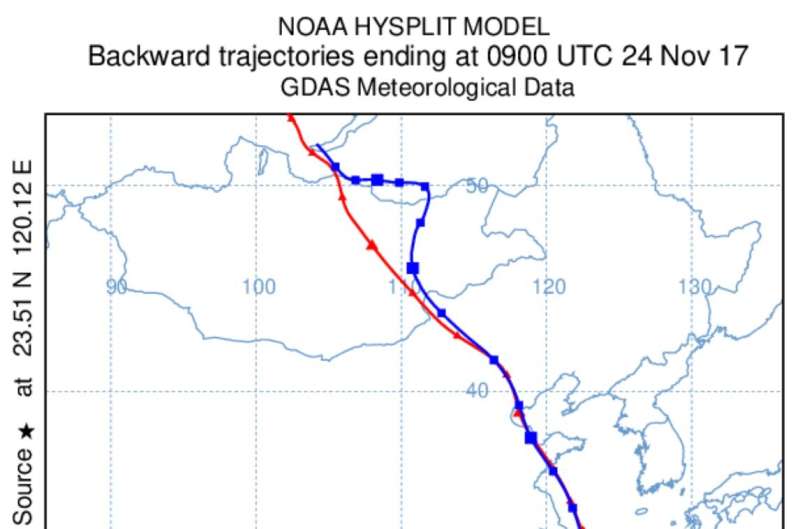Temperature, nearby species could affect avian flu transmission in migrating birds

Finding a turkey this holiday season could be difficult because of avian flu outbreaks on farms. Migratory wild birds could be to blame for transmitting the virus to commercial flocks, but no one has looked closely at this wandering population until now. In Environmental Science & Technology, researchers report that cooler temperatures and certain species gathering in the same winter habitat could increase the circulation of H7 and H9 strains.
Avian flu is currently monitored in the air at many poultry farms and live markets, where large outbreaks are likely to occur. But many of the deadliest outbreaks have been linked to migratory birds infected by H5, H7 or H9 strains. These wild birds live in spread-out populations where, even if there are infected individuals, the levels of viruses in the ambient air are quite low, making them hard to measure.
Previously, Pei-Shih Chen and colleagues determined how to measure low levels of airborne avian flu virus RNA in the environment. Using this method, Chen, Chen-Chih Chen and a new team wanted to collect first-of-its-kind information on virus strains that are likely to be circulating among migratory birds at a winter habitat and assess which factors could be influencing the transmission risks within the wild flock.
The researchers collected air samples regularly for two years near a large wetland in east Asia and filtered the samples through very fine membranes. Viral RNA was extracted from the filters, amplified and analyzed for influenza strains A, H5, H7 and H9 by quantitative real-time polymerase chain reaction. Then the team compared the results to weather data and their log of bird species present during the migratory season. Lower daily temperatures were linked to higher levels of influenza A, H7 and H9 in the air.
In addition, the presence of certain migratory bird species, including ones from the orders Anseriformes, Charadriiformes and Pelecaniformes, was linked to periods of elevated amounts of H7 and H9 viral copies. By demonstrating that ambient air sampling can detect airborne avian flu, the researchers say they've identified potential factors that impact the strains of the disease circulating in the winter among migratory birds.
More information: Jia Lin Zhang et al, Airborne Avian Influenza Virus in Ambient Air in the Winter Habitats of Migratory Birds, Environmental Science & Technology (2022).
Journal information: Environmental Science & Technology
Provided by American Chemical Society



















